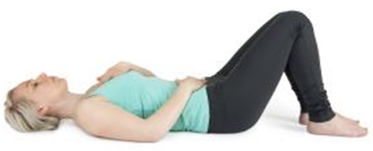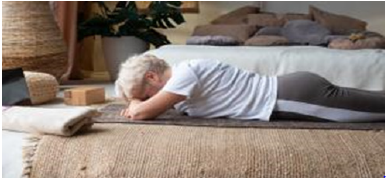- Submissions

Full Text
Research in Medical & Engineering Sciences
Conservative Respiratory Therapeutic Management of COVID-19
Karthikeyan T*
Physiotherapist, Bangalore, India
*Corresponding author: Karthikeyan T, Physiotherapist, NIMHANS, Physiotherapist, NIMHANS, Bangalore, India
Submission: May 08, 2021Published: July 27, 2021

ISSN: 2576-8816Volume9 Issue3
Opinion
COVID-19 symptoms can linger for weeks or even months after the initial infection. This phenomenon has been dubbed “long covid” by some. Because the coronavirus primarily affects the lungs, one of the long COVID-19 breathing symptoms after initial recovery can be ongoing breathlessness. The key symptoms of COVID-19 virus are cough, fever, breathlessness, anxiety, delirium, and agitation, but you may also have fatigue, muscle ache and headache [1]. Please note that severe breathlessness may cause anxiety, which may increase the breathlessness further. This leaflet has some simple breathing exercises you can do to help relieve the symptoms of breathlessness, Depression, and anxiety if you are self-isolating at home. The following tips should help you to manage breathlessness, Depression, and anxiety:
Environment
If you are self-isolating alone,
A. Improve air circulation by opening a window or door (do not use a fan as this can spread the infection).
B. Keep the room cool.
Positioning
A. Sit upright to increase peak ventilation (make it easier to breathe more effectively) and reduce airway obstruction (keep your airway clear).
B. Relax and drop your shoulder, which reduces the ‘hunched posture’ that comes with anxiety Figure 1.
Figure 1: Warm up Muscles.

C. Alternatively, sit in a chair leaning forward, with your
elbows resting on your knees or your elbows resting on a table.
Warm up muscles
(Before performing any activity that might make you cough, be
sure to put on a face mask if other people will be nearby.)
A. Depending on how severe your long COVID-19
breathlessness feels, you may get relief from engaging in
aerobic activity.
B. Do not exercise so intensively that your breathlessness
gets worse; only ramp up the intensity of your aerobic activities
as your breathlessness decreases. Aerobic activity also can
relieve chestpain and fatigue associated with long COVID
by pushing secretions out of your lungs and improving your
oxygenation.
C. Try brisk walking, jogging, cycling, dancing, or any activity
that gets your blood pumping.
Pursed lips breathing exercise
A. This breathing technique will help you to regain a sense of
control and improve your breathing muscle strength.
B. Please carry out this technique alone in a room while you
are self-isolating.
Repeat the exercises 3 or 4 times a day for 2 to 3 minutes only
Figure 2.
Figure 2: Pursed lips breathing exercise.

Step 1: Sit upright against the back of an armchair. Rest your
arms on the chair arms or on your thighs
Step 2: Breathe in (inhale) through your nose for 3 to 4 seconds
with your mouth closed.
Step 3: Breathe out (exhale) slowly through pursed lips for 4
to 6 seconds. Imagine that you are blowing out a candle when you
breathe out.
Diaphragmatic breathing on your back
Patient Position: Crook Lying
A. “Diaphragmatic breathing” refers to taking deep belly
breaths that cause your diaphragm to expand as much as
possible. Diaphragmatic breathing can inflate the tiny air sacs
at the bottom of your lungs and enable them to expel any mucus
lodged there.
B. To perform this COVID-19 breathing exercise, lie flat on
your back on the floor, with your knees bent and feet flat on the
floor. Place your hand over your navel (belly button) and focus
on pushing your hand up with each breath.
C. Repeat 8 to 10 times or for one minute Figure 3.
Figure 3: Diaphragmatic breathing on your back.

Deep breathing on your stomach
Patient Position: Stomach Down head supported by hand.
A. Performing diaphragmatic breathing while lying on your
stomach helps open up different air sacs in your lungs.
B. Do not perform this maneuver if it causes increased
breathlessness. Lie on your stomach on your bed or a sofa,
resting your forehead on your hands. Keep your mouth closed
and touch the roof of your mouth with your tongue.
C. As you slowly breathe in through your nose, focus on
pushing your belly button into the mattress or sofa. Exhale
slowly through your nose. Repeat 8 to 10 times Figure 4.
Figure 4: Deep breathing on your stomach.

Deep breathing with humming
Patient Position: Sitting erect position
A. Humming while exhaling may hold air in your lungs
longer than simply exhaling through your nose or mouth. To perform deep breathing with humming, start by sitting or
standing as upright as possible. Place one hand on your sternum
(breastbone) and the other hand on your belly.
B. Close your lips and touch the roof of your mouth with
your tongue. As you slowly inhale through your nose, focus on
pushing your lower hand away from your body before your
upper hand rises with your chest. Exhale through your nose
while humming.
C. Perform 8 to 10 times Figure 5.
Figure 5: Deep breathing with humming.

Deep breathing with coughing
Patient Position: Sitting
A. Coughing clears secretions from your lungs, so you
can breathe easier. But it’s important to use a good coughing
technique.
B. To do this, perform a sequence of diaphragmatic
breathing exercises as previously described. Then, while sitting
or standing, hold your mouth open and cough, catching any
secretions in a tissue.
C. Never cough or clear your throat with your mouth closed,
as this can put excessive pressure on your eardrums. Try to
cough from deep in your lungs to expel mucus Figure 6.
Figure 6: Deep breathing with coughing.

References
© 2021 Karthikeyan T. This is an open access article distributed under the terms of the Creative Commons Attribution License , which permits unrestricted use, distribution, and build upon your work non-commercially.
 a Creative Commons Attribution 4.0 International License. Based on a work at www.crimsonpublishers.com.
Best viewed in
a Creative Commons Attribution 4.0 International License. Based on a work at www.crimsonpublishers.com.
Best viewed in 







.jpg)






























 Editorial Board Registrations
Editorial Board Registrations Submit your Article
Submit your Article Refer a Friend
Refer a Friend Advertise With Us
Advertise With Us
.jpg)






.jpg)














.bmp)
.jpg)
.png)
.jpg)










.jpg)






.png)

.png)



.png)






